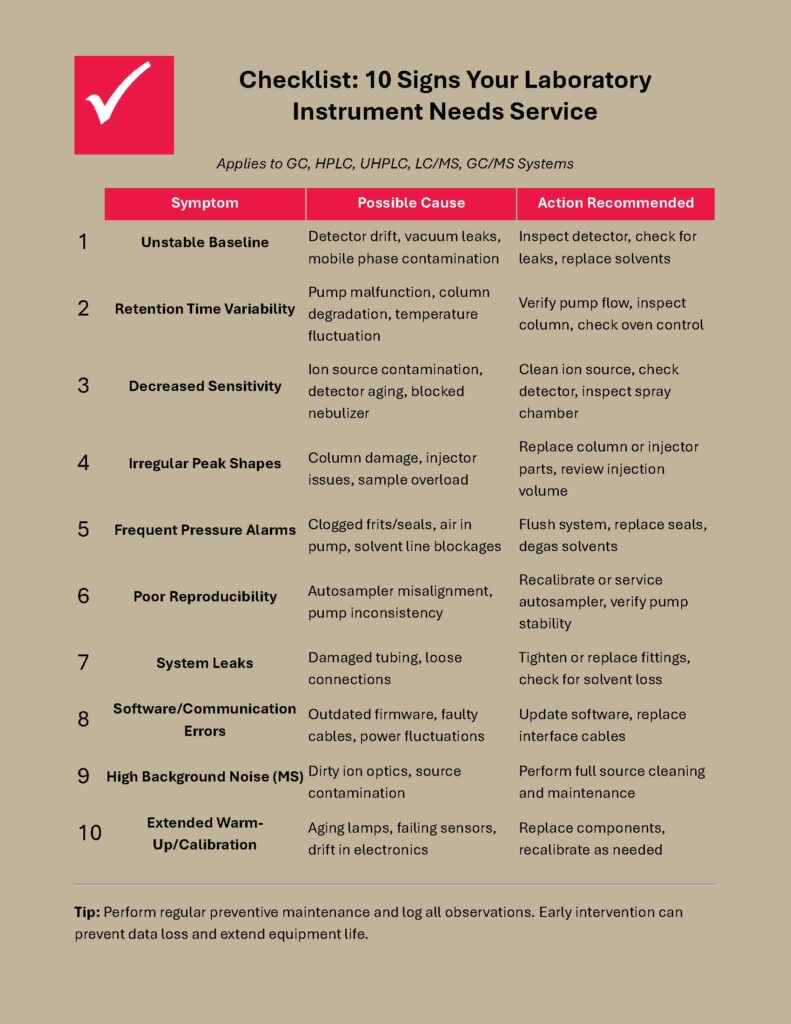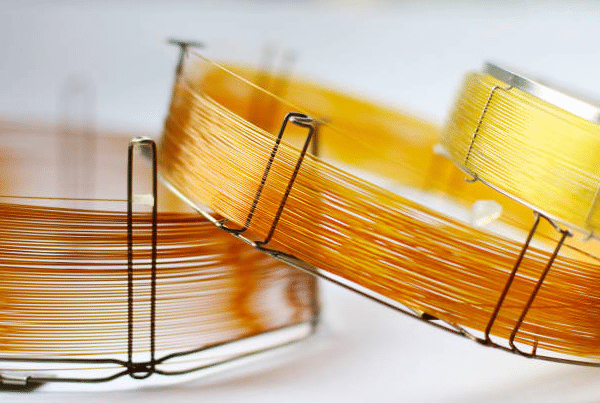Applicable to HPLC, UHPLC, GC, GC/MS, and LC/MS Systems
Properly functioning analytical instruments are essential for reliable, reproducible data. However, even high-end systems like gas chromatographs (GC), mass spectrometers (MS), high-performance liquid chromatography (HPLC), and ultra-high performance liquid chromatography (UHPLC) systems will exhibit signs of wear or malfunction over time. Ignoring early warning signs can lead to instrument failure, data integrity issues, and costly downtime. Below are ten key indicators that your instrument requires service.
1. Unstable Baselines
A drifting or noisy baseline in chromatograms may indicate a failing detector, contaminated mobile phase, or a compromised vacuum system in MS instruments.
2. Increased Retention Time Variability
Inconsistent retention times suggest flow rate instability, pump malfunctions, or column degradation, all of which warrant inspection.
3. Decreased Sensitivity or Signal Intensity
If your instrument shows reduced peak response despite using standard samples, it could point to ion source contamination (MS), detector issues, or clogged nebulizers (LC/MS).
4. Irregular Peak Shapes
Tailing, fronting, or split peaks often result from column issues, injector wear, or sample overloading—issues that require service intervention.
5. Frequent Pump Alarms or Pressure Fluctuations
HPLC and UHPLC systems that frequently trigger pressure-related alarms may have worn seals, blockages, or air in the system.
6. Poor Reproducibility
Variability in replicate runs indicates problems with autosampler precision, pump calibration, or unstable system conditions.
7. System Leaks
Visible fluid or gas leaks around tubing, seals, or connectors are critical issues that can damage components and compromise safety.
8. Software or Communication Errors
Instruments that intermittently lose connection or trigger software faults may have outdated firmware, failing electronics, or network issues.
9. Excessive Background Noise in MS Systems
A rising noise floor in GC/MS or LC/MS systems often results from contamination of the ion optics, source, or detector.
10. Extended Startup or Calibration Times
Longer-than-usual warm-up or calibration periods may indicate aging components or failing sensors requiring preventive maintenance.
Conclusion
Routine monitoring and timely servicing of your laboratory instruments can extend their lifespan, reduce operational disruptions, and maintain data quality. If your system shows any of these signs, schedule preventive maintenance or diagnostic service with a qualified technician.
Pro Tip
When it is time to replace an instrument, be sure to compare the benefits and cost savings of a quality, skillfully refurbished instrument from GenTech Scientific. Equip your laboratory at a fraction of the cost of new, and get both performance and peace of mind. GenTech Scientific backs your purchase with lifetime support, training, installation, and warranty options including one-year and extended warranties.
Here is a downloadable checklist-style version of the technical tip, suitable for use as a visual guide or printable resource for lab personnel.







